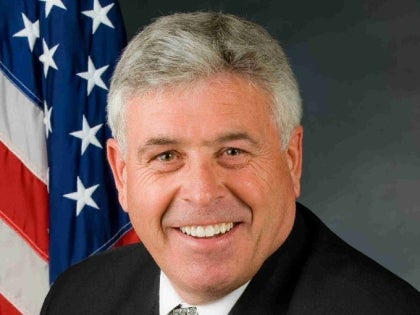
Op-Ed: New Budget Isn’t Perfect, but It Benefits Upstate New York
Darrel J. Aubertine
April 5, 2009
The budget we passed last week for the 2009-10 fiscal year is not a perfect budget. No budget can be. What it is though, is a responsible, balanced spending plan that restores funding for vital services and programs, limits the impact of these hard fiscal times on Upstate New York and puts us in position to create jobs and build a better future for all New Yorkers.
In this budget, we were able to restore more than $6 million for agriculture programs. Among those programs are the Farm Viability Institute which helps farmers find new practices to help them earn a living off their land, $453,000 for county fairs that promote the best of New York’s agriculture, and the Wine and Grape Foundation, for which more than $1.2 million will be used to help our thriving local wine industries grow even more. Another $5.5 million outside of the agriculture budget was made available for farmers to preserve their farmland.
We targeted stimulus revenue to maximize job creation benefits, much of which will come in the form of upstate jobs through new green jobs initiatives and infrastructure projects. This budget also maintains aid to municipalities and protects rural areas from a proposed cap on state property tax payments that would have bankrupted towns with large amounts of state forest land.
We restored $800 million for healthcare, preserving critical coverage in the EPIC program and ensuring that hospitals, especially those in the 48th Senate District receive the funding they need to provide the services we rely on. We opened up new funding for rural and suburban community healthcare programs, and maintained a commitment to bringing new healthcare professionals into rural areas along with new services.
We restored vital funding to education, holding the line on foundation aid and using stimulus money wisely to benefit school districts in Oswego, Jefferson and parts of St. Lawrence counties at funding levels more than 4 percent higher than last year’s record increase. We protected aid for SUNY and community colleges, all while also giving SUNY schools a share of a tuition increase for the first time ever. This budget protects tuition assistance program funding and creates a new $350 million dollar loan program for students.
This was by far the most difficult budget I’ve had the opportunity to work on. But voting against it would have jeopardized funding for schools, colleges, hospitals and nursing homes. It would have raised property taxes exponentially on property owners in our state’s most rural areas. A “no” vote would have shortchanged our seniors and put the burden of funding what services were left on the middle class.
What’s more, those who criticize this budget say we spent too much and they had a better plan. Yet, if we had adopted their amendments, spending would have increased another $2 billion and cut our revenues another $6 billion with no answer as to how to pay for it—except rhetoric claiming the very stimulus they derided in one breath would solve all problems. In truth, the only way we would have been able to balance the budget with their amendments would have been more debt.
We heard misinformation about how the personal income tax increase known as the “Fair Share Tax” would hurt Upstate the most, yet the truth is we protected Upstate services in this budget and the majority of the cost will be paid for by people in Long Island and New York City. In the 48th district, just 702 of the more than 106,000 income tax filers from 2008—0.7 percent—will be asked to pay more, and just 121 will be in the highest bracket. Yet all of us will benefit from the services we protected and our children will benefit from our fiscal responsibility.
This economic downturn hastened our descent, but for more than 12 years, the former Senate Majority tried to fulfill every promise on the backs of future generations with debt, and that put us on the path toward this crisis. Doing more of the same and expecting different results is not the answer. We chose to set before us a different path. One that does not put us deeper into debt and instead reduces projected budget deficits for the coming years by 80 percent.
We made difficult choices in this budget. No one wants to raise taxes or cut services. The easy way would have been to add to our debt and push the crisis down the road. Instead we made the tough choices and for Central and Northern New York, it was the right choice.